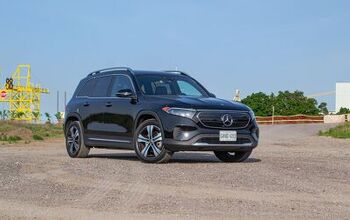Protection on Land & Sea – Insuring Your Boat, Watercraft, and Motorcycle

There’s nothing like feeling the wind on your face, whether you’re cruising down the highway on your motorcycle or riding the waves on your boat or jet ski. The last thing anyone wants is to have a perfect day on the road or water ruined by an accident, but the situation will be made even worse if you find yourself without the proper insurance coverage to help you in the aftermath. Due to their unique natures, boats and motorcycles require special insurance coverage in addition to your existing homeowner and auto policies. Read on to learn what to look for in a policy, tips for shopping around, and more.
BOAT INSURANCE BASICS
Many people assume that their homeowner’s insurance extends to their watercraft—and to a certain extent that is true. It’s important to read the fine print, however, since many home policies may only offer $1,000 to $1,500 in coverage. Even if your policy covers a higher dollar amount, it’s a good idea to buy a stand-alone policy for your boat or other personal watercraft. A typical boat insurance policy offers four key types of coverage: property, liability, medical payments, and uninsured watercraft. Property coverage addresses any loss due to theft or damage on land or water (and yes, that includes sinking). You can opt for cash value or agreed value— a predetermined amount with which both you and your insurance company are comfortable. The amount of coverage you decide on will play a major role in determining the cost of your policy but deciding to skimp on coverage could limit how much your insurance company will pay in the event of an incident, so consider your coverage amount carefully.
Liability insurance, like its automotive counterpart, pays for the damages caused by your boat to another’s property or person. This type of coverage can also extend to related damages caused by your watercraft, like wake damage, and legal fees if you are sued over an accident or other issue. Remember that liability insurance only pays for the other person’s damages, not yours. Medical payments coverage will cover the cost of your medical bills if you or your passengers are injured in a boating accident. Uninsured watercraft coverage will do the same, making sure your bills will be paid even if someone else has inadequate insurance coverage. Together, all these types of coverage make sure you, your watercraft, and your passengers are protected in the event of an accident.

ADD-ONS AND SPECIAL COVERAGES
There are optional additions to your policy that you might be interested in as a boat owner. Coverage for your boat trailer, special equipment (like fishing gear), boat accessories (such as radar), ice and freezing coverage, fuel spills, and personal property you keep on your boat are all add-ons you should consider depending on your circumstances and needs. There are certain things that, regardless of your policy, won’t be covered by boat insurance. These things include wear and tear from regular use, manufacturer defects, faulty boat design, corrosion, overuse, bug destruction, mold damage, and any damage from aquatic life or creatures. If you have questions about specifics when it comes to what’s covered and what’s not, consider working with an insurance agent to purchase your policy.
If you decide to do your own research and shopping, you should know what impacts the cost of your boat insurance policy. Apart from the amount of coverage, the things that affect cost are like those that determine the cost of an auto insurance policy. Where you live plays a big part—residents of states that don’t have coastlines and/or shorter boating seasons tend to pay less—as does the overall value of your boat, the engine type, location of boat use, boating experience of the owner, past claims, and the boat’s ownership record. Occasionally, insurance companies will also consider your driving record and whether you have taken any safe-boating courses. As with any insurance policy, the less risky you and your property seem, the less expensive your insurance might be.
A final note on insurance related to your watercraft: did you know there is boat dock insurance? If the dock is on the premises of your primary residence, you can typically add it onto your homeowner’s policy. If it is located somewhere else, like a dock or slip from a marina, you’ll want to check and see if they have the property under their insurance. If not, you’ll need to add a site to your homeowner’s policy.

PROTECTING YOUR MOTORCYCLE
But what if it’s the open road that calls to you? Even if you’re just a weekend rider, motorcycle insurance is required by law. Many people don’t realize that their auto insurance policy doesn’t extend to their motorcycle—to get coverage for your bike you’ll need to add it to your existing policy. The good news is that, while the coverage options and requirements for motorcycles are very similar to cars, motorcycle insurance is generally less expensive. You can also investigate various discounts if you want to lower the price even more. Consider mature rider discounts if you’ve been on the road for a long time, training course discounts from the Motorcycle Safety Foundation (MSF), organizational discounts from groups like the American Motorcyclist Association (AMA), and multi-bike discounts.
Most states require you to have, at minimum, liability insurance, covering injuries to another person or their property. If you’re unsure of how much liability coverage is appropriate for your circumstances, consider speaking with an experienced, qualified agent. Like auto insurance, motorcycle insurance can also include collision coverage, which will pay to replace or repair your motorcycle regardless of who is at fault in the event of an accident, and comprehensive coverage, which offers help with the costs associated with theft, natural disasters, or vandalism. Finally, uninsured/underinsured motorist coverage protects you if someone is driving (illegally) without insurance.
There is no standard definition for “full coverage” when it comes to motorcycle insurance, and your policy should be customized to your bike, risk tolerance, and financial situation. If you’ve spent $10,000 on custom accessories, you want to get identical replacements after a crash. If you don’t tell your insurer about them and add them to your policy, you could end up back with just factory specs. Of course, you can choose to leave customized items off your policy. Your premium will be lower, but your extra equipment will not be covered. If you have any questions or concerns, it’s worth speaking with an insurance agent to make sure you have the types and amounts of coverage that will protect you and your bike. The independent agents at Toyota Insurance are insurance experts with decades of industry experience. They can help you find the right policy at the right price, whether you’re hitting the road or riding the waves. Visit toyotainsurance.com today to learn more!

*This is a sponsored article
More by AutoGuide.com News Staff































Comments
Join the conversation